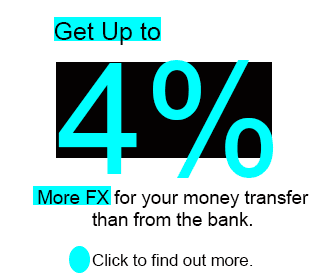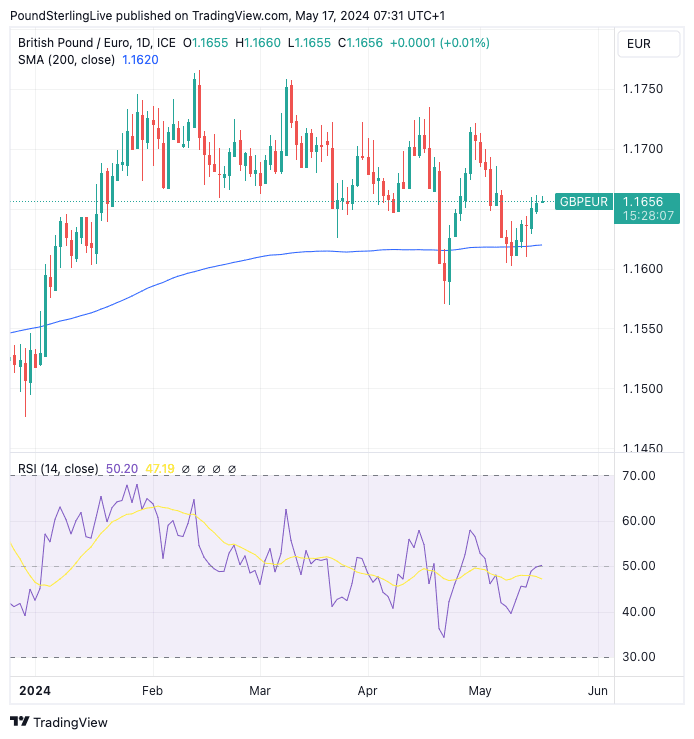GBP/EUR Rate's Bullish Bias Holds But Inflation Data Risks to Limit Advance
- Written by: Gary Howes

Image © Adobe Images
Pound Sterling commands a bullish bias against the Euro in the near term, but next week's inflation print could prompt meaningful losses if it comes in soft and solidifies a June rate cut at the Bank of England.
According to one market analyst, the Pound to Euro exchange rate looks increasingly constructive from a technical perspective, having this week broken back above the 200-day moving average.
Analyst Peter Stoneham at Reuters says GBP/EUR maintains a bullish bias while above the 200 DMA, currently at 1.1619.
Above: GBP/EUR at daily intervals with the 200 DMA and RSI (lower panel) annotated. Track GBP/EUR with your own custom rate alerts. Set Up Here
The 200 DMA can be a key pivot point over long horizons, and currencies tend to get trapped above or below their moving averages for months at a time. To be sure, Pound-Euro has been a reliable 'sideways trender' in 2024, but the move back above the 200 DMA stabilises the pair following a soft few weeks of trade.
An upside bias is confirmed by the rising daily RSI and Stoneham says the underlying bias remains constructive while the exchange rate is above 1.1622.
Compare Currency Exchange Rates
Find out how much you could save on your international transfer
Estimated saving compared to high street banks:
£25.00
Free • No obligation • Takes 2 minutes
Although the technical picture might be constructive, the fundamental backdrop, the ultimate arbiter of currency market direction, risks upsetting the apple cart next week when UK inflation numbers for April are released.
A fall in inflation towards 2.0% is widely expected in what amounts to a significant moment for the UK and Bank of England as its policy target is reached.
"Inflation is set to significantly step down due to base effects and the lower energy price cap. Our CPI forecast (2.1% y/y) is in line with the BoE's," says Abbas Khan, an economist at Barclays.

However, the Bank is wary that inflation will pick up again in the coming months, raising questions about the prospect of interest rate cuts. The Bank has signalled lately that it will cut rates in June if the data requires.
But the market is only positioned at approximately 55% odds for a June cut. Should incoming data see these odds rising, the Pound can fall.
Falling household energy bills will significantly reduce overall inflation, but services inflation will be the key component of the release.
In a speech delivered Thursday, Megan Greene, a Bank of England Monetary Policy Committee Member said the Bank continues to watch labour market slack, wages and services inflation as key indicators of inflation persistence. "These metrics are all closely interlinked. Labour market slack is a key driver of wage growth... wage growth in turn contributes to services inflation."
In short, once the big fall in energy prices washes through, the Bank will struggle to meet the 2.0% inflation target sustainably unless services inflation starts to fall more noticeably.
Barclays expects services to print at 1.1% m/m (NSA) and 5.4% y/y (prev. 6.0% y/y). "inflation (particularly services CPI), labour market and GDP releases between now and the June meeting have taken on added importance," says Khan.





